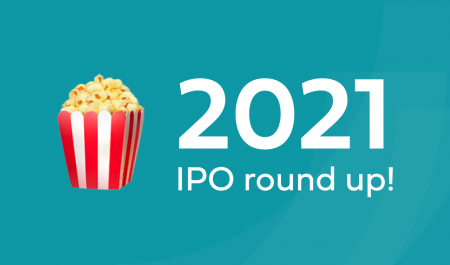What most market watchers dreaded has become a reality. Russia has attacked Ukraine. And just as we are coming out of the firm grip of the pandemic, a new set of challenges confront us. Crude oil prices have crossed the $100 mark, for the first time in the last seven years.
This invasion has come at a time Indian markets have been volatile. The Nifty50, India’s benchmark index, has already fallen 6.8% from its peak of 18,308 on January 17, 2022. In fact, as on February 24, 2022, it has fallen by 5.2% in the last four days alone. Against this backdrop, it is natural that investors would want to know how Russia’s invasion of Ukraine will impact Indian markets. This question becomes even more important given that in the past two years, a large number of retail investors have begun investing in India’s stock market. Let us understand how the Russia-Ukraine conflict can impact India’s stock market.
The direct connection
There is a strong correlation between geo-political issues and global energy markets. In the present context, Russia has huge oil and gas reserves. It is the third largest crude oil producer and the largest natural gas exporter in the world. Hence, the invasion of Ukraine by Russian military may lead to disruption in Russian supplies to the world.
Russia caters to more than one-third of Europe’s natural gas requirement. In the past one year, gas prices have gone up by 60%. Winter in Europe has kept the demand for gas high. As a result of this, gas prices continue to remain high at least till the end of the winter (February 2022). Though prices were expected to cool off after March this year, the invasion of Ukraine by Russia may impact supplies from Russia given its focus on Ukraine. Due to this, gas prices may go up further. It must be noted here that free movement of gas and crude oil is key to stable energy prices. Presently, crude oil prices are near $104 per barrel.
The Indian Story
One of the serious repercussions of high crude oil prices is inflation. If the Reserve Bank of India (RBI) accelerates its rate hike cycle to curb inflation, then it may impact the capital expenditure cycle in India. Both these factors may slow down economic growth.
Foreign Institutional Investors (FIIs) are selling Indian equities, already. This is in line with their emerging market strategy. The flight of foreign capital to their home market is a challenge for the Indian stock market. In this context, Russia’s invasion of Ukraine will further impact India’s equity market. The impact can be gauged from India’s dependence on crude oil. India imports over 70% of the crude it needs. Historically, it has been observed that when crude oil prices stay above $80 per barrel, India’s economic growth falls. Imported inflation affects demand in the economy.
Besides this, we have to also look at the exposure of Indian companies and the Indian economy to countries such as Russia, Ukraine and Belarus for oil and gas. For example, India imports fertilisers from Russia. India also plans to enter into a multi-year agreement with Belarus for imports of potash by paying in Indian rupees. However, after the invasion of Ukraine by Russia, this deal may be in jeopardy. India has sought clarity on shipping routes before signing up the deal. Such developments are likely to increase input prices.
Companies that operate in sectors that are highly dependent on crude oil as an input may see an impact on their earnings’ growth. For example, the aviation sector, where aviation turbine fuel (ATF) is a key input cost, may see lower margins. Presently, fuel expenses account for 30% of the total operating cost of an airline in India.
Similarly, high petrol prices may also discourage two-wheeler buyers. This may impact sales of two-wheeler makers, which will affect the stock prices of two-wheeler companies. Paints, tyre, footwear and lubricant manufacturing companies will also be impacted due to rising crude oil prices. On the whole, if the Russia-Ukraine conflict continues for a long time, it can result in a fall in earnings of most companies as their cost of operations increase.
Safe Haven
Historically speaking, as geo-political tensions rise, institutional investors return to the US market. In times of crisis, investors find it profitable to hold the US dollar—the global reserve currency. The dollar index, which measures the value of the US dollar relative to major global currencies, has been volatile in recent weeks. After hitting a high of 97.30 on January 31, 2021, the index had cooled down a bit. But in the wake of the Russia-Ukraine crisis. the index has bounced back again. This shows that the dollar is strengthening. Other things remaining the same, the price of the US dollar is inversely correlated with the prices of gold and other commodities as most of them are denominated in the US dollar. So if the US dollar rises, the prices of gold and other commodities fall.
Besides the dollar, seasoned investors increase their focus on bond markets too. When equity markets turn volatile, investors look for relatively less volatile assets. The yields on long-term government bonds in the developed markets have been inching up in anticipation of an increase in interest rates by the US Federal Reserve. For the uninitiated, a bond yield is calculated by dividing the interest to be received by the bond price. A high bond yield means high return for an investor who wants to hold the bond till maturity. When interest rates fall, bond prices go up and when interest rates go up, bond prices fall. As Russia-Ukraine conflict continues, investors may reduce their exposure to equities and increase their exposure to bonds.
In such a situation, another key asset that attracts high attention of investors is gold. Gold prices are already up. After hitting a low of $1,753 per troy ounce on December 15, 2021, it crossed $1,945 mark on February 24, 2022. Gold has a negative correlation with risky assets, such as equities. If equities remain volatile, then gold is expected to remain firm. Rising geo-political tensions have traditionally worked in favour of gold prices. Though there is an expectation that interest rates may rise and the US dollar will remain strong, gold may remain in demand till uncertainty subsides.
What next?
Now, a key question which may weigh on investors’ minds is: How to deal with this situation? Historically speaking, savvy investors park a certain amount of their portfolio in gold as a part of their hedging strategy.
But investors now have to check their asset allocation in the light of their financial goals. Savvy investors focus more on preserving the capital rather than return on capital. Hence, they invest in well-managed companies which tend to emerge winners. Companies with poor financial health and no growth may see further value destruction if they cannot pass on input inflation and protect their margins. Astute investors avoid such value traps and instead stick with good quality businesses that come out relatively unscathed from such turmoil. Exposure to safe haven assets such as gold and bonds also help them to protect their capital. Such capital can be redeployed at a later date in equities for high growth. A wise investor never measures the depth of water with both feet.
Note: The index numbers and crude oil prices mentioned in this articles are as on 24 February 2022. Since the markets are extremely volatile at present, they may change as the days go by.
Disclosures and Disclaimer
Investment in securities markets is subject to market risks; please read all the related documents carefully before investing. The securities quoted are exemplary and are not recommendatory. Past performance is not indicative of future results. Details provided in the above newsletter are for educational purposes and should not be construed as investment advice by RKSV group. Investors should consult their investment advisor before making any investment decision.



